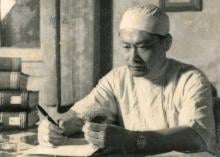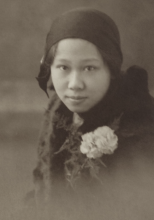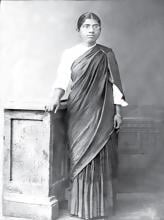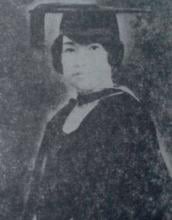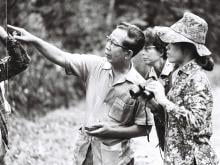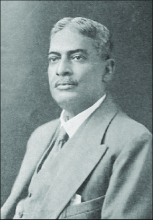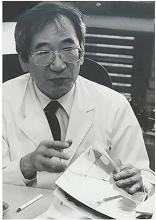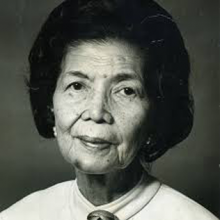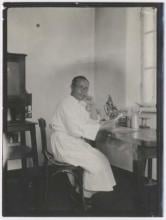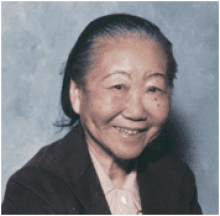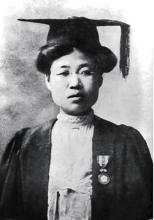Medicine
News

10 Aug 2008
Newsworthy papers include Cleaning up the house, The ocean’s surprisingly hungry algae, Made in yeast, Genetic risk factor for chronic inflammatory disorder, Rats weigh up the evidence, An antibacterial catapult, Adopting an orphan receptor and Better action anticipation in elite basketball players

07 Aug 2008
Summaries of newsworthy papers include Where is the science in drug doping?, Blueprint for infection, Virus to virus, A secreted factor controls the bacteria’s virulence, Asymmetric inner workings revealed and A potted history of milk

06 Aug 2008
In Nature China this week - A genetic technique to produce single-sex commercial fish stocks has been successfully tested on Chinese sole and more highlights.

03 Aug 2008
Karolinska Institutet is one of Europe's largest medical universities. It is also Sweden´s
largest center for medical training and research, located in Stockholm, Sweden. Keio
University has entered into the agreement with Karolinska Institutet in 2007.

03 Aug 2008
Summaries of newsworthy papers include Immunology: Avoiding attack when not stressed and Methods: Sex in bacteria for genome-wide interaction screens

31 Jul 2008
Summaries of newsworthy papers include Genetics for mental health disorder, Liquid ethane on Titan, Percolating disease, The impact of microRNA on proteins, Unlocking the door to HIV infection, Creating smart surface networks and Snake fangs bite back

30 Jul 2008
Researchers in China have identified a potential therapeutic gene for the treatment of a number of human cancers

27 Jul 2008
Scientists have developed electrically powered semiconductor laser diodes that operate at a shorter wavelength than any others used today. The lasers could be used for the next generation of optical storage systems following today’s Blu-ray disks, and will have applications in biomedicine, materials processing and microchips

23 Jul 2008
Summaries of newsworthy papers include Ecology: The unrealized power of parasites, Materials: Flexible electronic networks of carbon nanotubes and Astrophysics: Accretion disks show their true colours
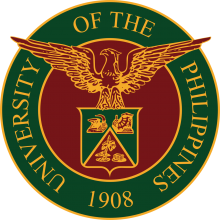
23 Jul 2008
In a study conducted on the relationship of taste to food preference and body mass index, a significant relationship was found between taste threshold on the one hand, and energy and nutrient intakes on the other; also between 6-n-propylthiouracil (PROP) taster status and food preference.

23 Jul 2008
Assessment of antioxidant activities of some local root crops in the Philippines by researchers from the University of the Philippines Diliman reveals that the phenolic content of sweet potato has the highest antioxidant property among the local root crops studied.

23 Jul 2008
In Nature China this week - Prestressed multiwalled carbon nanotubes have enhanced mechanical properties that are ideal for building space elevators and more

21 Jul 2008
Comments on the the Sichuan earthquake and cyclone Nargis. Other papers include Genetic origins of the Grey horse, New cancer drugs with reduced side effects, Predicting lung cancer survival, Heavy rains ahead, Fighting tuberculosis with acid, Rafting down biological cascades, Animal behaviour lighting the way, Nanotechnology: Gold standard

16 Jul 2008
Summaries of newsworthy papers include Mars: Water almost everywhere, Earth science: Setting off a Cretaceous extinction event, Microscopy: Watching the cavorting of once-invisible atoms and How the brain pays attention

16 Jul 2008
In a special News report, Nature asks leading reproductive biologists and clinicians what developments in the field could have an equivalent impact in the next three decades. Millions of babies have now been conceived through IVF – will any of the experts’ latest predictions, including artificial wombs, be as commonplace in 2028?
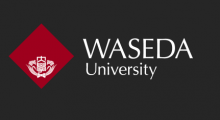
16 Jul 2008
With the upcoming Olympics, Waseda University has put forward experts in Sports Science, Sports Business, Fan Behaviour, Coaching and Sports Medicine.

16 Jul 2008
In Nature China this week - The soil bacteria Streptomyces can be manipulated to produce polyene antibiotics with improved pharmacological properties. Other highlights include Aquaculture: Stressful scallops, Nanowaste: Reduce, reuse, recycle, High-temperature superconductivity: Warmer than expected

13 Jul 2008
The Irrawaddy Delta, Myanmar is a high-risk area for groundwater contamination with arsenic, suggests research published online this week in Nature Geoscience.Other papers include A common inflammatory pathway in silicosis and Alzheimer’s, Genetic risk factor for osteoarthritis and Shells ruled by mass extinctions

09 Jul 2008
Summaries of newsworthy papers include The scare switch, Ebola structure reveals virus camouflage, A bridge from the historical to the contemporary, A handle on human proteins used by H5N1 virus, Could there be water in the Moon?, Spinning to destruction, The usefulness of social diversity, Monitoring stress at depth and Keeping an eye out

09 Jul 2008
In Nature China this week - Researchers in Beijing have developed a screening method that can quickly pick out potential antitumour agents from natural plant extracts and more

08 Jul 2008
Nature Publishing Group (NPG) is pleased to announce the initiation of a free service, launching in 2008, to help authors fulfil funder and institutional mandates.

06 Jul 2008
Summaries of newsworthy papers including Nanotechnology: Look to the stars, Mutation associated with increased rice yield, How EGFR promotes skin cancer, A natural ligand for PPAR-gamma, Ingesting and digesting intracellular bacteria, Sensing light without eyes, Muscling in on disease imaging and Enzyme implicated in risk of common obesity.
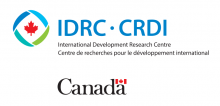
06 Jul 2008
Be one of 5 journalists (from all over the world) to cover the meeting of the world’s experts on the relationships between health and the environment, in Merida (Mexico), 1 – 5 December 2008

02 Jul 2008
Summaries of newsworthy papers include Extinction: A game of chance, Materials: Going with the flow, Virology: Viral sedatives, Collision course: Another type of brief encounter and finally… Carbon on early Earth

02 Jul 2008
In Nature China this week - Researchers in Shanghai explain how cholesterol is absorbed in cells, and more importantly, how the drug ezetimibe stops this absorption and more

29 Jun 2008
Landslides drive glacial advances, Cognitive therapy to control reward anticipation, A new way to treat premature ageing, A sweet route to treating Alzheimer’s disease?, Oceanic methane production, New anti-parasite protective mechanism, Automated imaging of worm gene expression, Mushroom bodies feel the heat

26 Jun 2008
Summaries of newsworthy papers include Ozone destruction over an Atlantic holiday destination, Understanding four-legged fish, Cut off the food to spite the tumour, Volcanic explosions in the deep Arctic Ocean, It takes two and a feminizer for honeybees

25 Jun 2008
In Nature China this week - Researchers in China have developed a computer algorithm for discovering novel non-coding RNA genes from previously ignored sequences in the human genome and more

22 Jun 2008
Summaries of newsworthy papers include Carbon capture by land and by sea, Gene addiction reveals cancer’s Achilles’ heel, Automated microfluidics-based screening of C. elegans and Improving stroke therapy

19 Jun 2008
The selected programs are Education and Research Center for Stem Cell Medicine, Center for Education and Research of Symbiotic, Safe and Secure System Design, Raising Market Quality - Integrated Design of "Market Infrastructure" and Designing Governance for Civil Societies
Researchers
Sorry, no researchers coming up for this topic.
- « first
- ‹ previous
- 1
- 2
- 3
- 4
Giants in history
Vietnamese surgeon Tôn Thất Tùng (10 May 1912 – 7 May 1982) developed a pioneering technique that reduced the risks and mortality rate of liver operations.
Michiaki Takahashi (17 February 1928 – 16 December 2013) was a Japanese virologist who developed the first chickenpox vaccine.
Irene Ayako Uchida’s (8 April 1917 – 30 July 2013) strides to understand genetic diseases such as Down syndrome paved the way for early screening of chromosomal abnormalities in foetuses.
Baron Kitasato Shibasaburo (29 January 1856 – 13 June 1931) was a Japanese physician and bacteriologist whose work led to a new understanding of preventing and treating tetanus, diphtheria and anthrax.
Maggie Lim (5 January 1913 – November 1995) was a Singaporean physician who promoted family planning and expanded the access to clinics to improve the quality of life for mothers and children in Singapore’s early days.
By isolating soil microorganisms and studying the compounds they produce, Satoshi Omura (born 1935) discovered almost 500 organic compounds with unique properties that were produced by these microorganisms, including many new antibiotics.
The founder of the Adyar Cancer Institute in India, Muthulakshmi Reddy (30 July 1886 – 22 July 1968), fought to uplift women and girls from impoverished situations.
Chinese-American virologist and molecular biologist Flossie Wong-Staal (27 August 1946 – 8 July 2020) was the first scientist to clone HIV and determine the function of its genes.
Maharani Chakravorty (1937 – 2015) was one of India’s earliest molecular biologists whose research paved the way for advances in the treatment of bacterial and viral infections.
Archana Sharma (16 February 1932 - 14 January 2008) conducted research into plant and human genetics that expanded the understanding of both botany and human health. In relation to botany, she uncovered the means by which asexually-reproducing plants evolve into new species.
The first Thai woman to receive a degree in medicine, Margaret Lin Xavier (29 May 1898 – 6 December 1932), is best remembered for her compassion towards her less privileged patients.
In 1915, pathologist Katsusaburo Yamagiwa and his research assistant Koichi Ichikawa became the first to prove that chronic exposure to chemicals can cause cancer.
In 1915, Koichi Ichikawa along with pathologist Katsusaburo Yamagiwa became the first to prove that chronic exposure to chemicals can cause cancer.
Husband and wife team, Kimishige (3 December 1925 – 6 July 2018) and Teruko Ishizaka (28 September 1926 – 4 June 2019) discovered the antibody class Immunoglobulin E (IgE) that triggers allergic reactions. They also discovered that IgE antibodies attach to white blood cells, known as mast cells, releasing histamine, which causes allergic reactions.
Husband and wife team, Kimishige (3 December 1925 – 6 July 2018) and Teruko Ishizaka (28 September 1926 – 4 June 2019) discovered the antibody class Immunoglobulin E (IgE) that triggers allergic reactions. They also discovered that IgE antibodies attach to white blood cells, known as mast cells, releasing histamine, which causes allergic reactions.
Japanese chemist Takamine Jokichi (3 November 1854 – 22 July 1922) founded the Tokyo Artificial Fertilizer Company, where he isolated a starch-digesting enzyme (named takadiastase) from the fungus Aspergillus oryzae.
Ground-breaking cancer researcher Kamal Jayasing Ranadive (8 November 1917 – 11 April 2001) advanced the understanding of the causes of leukaemia, breast cancer and oesophageal cancer through the use of animal models. She was also among the first to recognise how susceptibility to cancer is linked to tumour-causing interactions between hormones and viruses.
The research of Filipino pharmaceutical chemist Luz Oliveros-Belardo (3 November 1906 – 12 December 1999) focussed on essential oils and other chemicals derived from native Philippine plants.
Thai physician and conservationist Boonsong Lekagul (1907 – 1992) made major contributions to the preservation of his country’s wildlife.
Indian scientist and physician Upendranath Brahmachari (19 December 1873–6 February 1946) is best known for creating a drug called Urea Stibamine, used to safely and reliably treat visceral leishmaniasis (or Kala-azar), a severe infection caused by the Leishmania parasite.
Filipino chemist and pharmacist Manuel A. Zamora (29 March 1870 – 9 July 1929) is best remembered for his discovery of the tiki-tiki formula to combat beriberi, a disease caused by Vitamin B1 deficiency.
Korean parasitologist Seung-Yull Cho (16 November 1943 – 27 January 2019) is remembered largely for his pioneering works to control infections caused by helminthic parasites and his contribution to journal publishing.
Fe Villanueva del Mundo (27 November 1911 – 6 August 2011) was a Filipina paediatrician who founded the Philippines’ first paediatric hospital.
After witnessing death and suffering as a youth in his home village during World War II, Nguyễn Tài Thu (6 April 1931 – 14 February 2021) set his sights on alleviating pain by becoming a doctor. After studying Traditional Chinese Medicine in China in the 1950s, Thu returned to Vietnam to serve in military hospitals. Eventually, he became the country’s foremost practitioner of acupuncture, a technique he first learned by inserting needles into himself.
Minoru Shirota (April 23, 1899 – March 10, 1982) was a Japanese microbiologist who invented the popular fermented drink Yakult.
Wu Lien-teh (10 March 1879 – 21 January 1960) was a Malaysian-born doctor who invented a mask that effectively suppressed disease transmission. Winning the prestigious Queen’s Scholarship enabled Wu to become the first Chinese student to study medicine at the University of Cambridge.
David T. Wong (born 1936) is a Hong Kong-born American neuroscientist who is best known for discovering the antidepressant drug fluoxetine, better known as Prozac.
Indian organic chemist Asima Chatterjee (1917 to 2006) studied the medicinal properties of plant products, especially compounds known as vinca alkaloids.
Chika Kuroda (24 March 1884 – 8 November 1968) was a Japanese chemist whose research focussed on the structures of natural pigments.
Umetaro Suzuki (7 April 1874 – 20 September 1943) was a Japanese scientist best remembered for his research on beriberi, a disease caused by vitamin B1 deficiency, characterized by limb stiffness, paralysis and pain.
Salimuzzaman Siddiqui (19 October 1897 – 14 April 1994) was an artist and chemist from Pakistan whose research focused on natural products from plants.
Barry Paw (29 August 1962 – 28 December 2017) was a biologist and oncologist who discovered several novel genes and their functions in red blood cells.
Syed Qasim Mehdi (13 February 1941 – 28 September 2016) was a Pakistani molecular biologist who was a founding member of the Human Genome Diversity Project (HGDP), which assessed human diversity by studying human migration, mutation rates, relationships between different populations, genes involved in height and selective pressure.
Tsai-Fan Yu (1911 – 2 March 2007) was a Chinese-American physician and researcher who was the first female full professor at Mount Sinai School of Medicine. She discovered that gout, a condition characterized by the painful inflammation of joints, was caused by elevated levels of uric acid in the bloodstream.
Min Chueh Chang (10 October 1908 – 5 June 1991) was a Chinese-American biologist who studied fertilization in mammalian reproduction.
A Japanese surgeon, Tetsuzo Akutsu (20 August 1922 – 9 August 2007) built the first artificial heart capable of keeping an animal alive.
Ogino Ginko (3 March 1851 – 23 June 1913) was the first registered female doctor to practise modern medicine in Japan.
Esther Park (1877-1910), born Kim Jeom-dong, was the first female Korean physician to practise modern medicine in Korea and trained the first generation of Korean female doctors.


